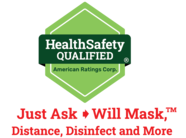HealthSafety Qualified Resource Blog
Health and safety are embedded into the organization’s mission and operations

Health and safety in the workplace are essential components of a productive and sustainable business environment. By fostering a culture of safety, organizations can protect employees, enhance morale, and improve operational efficiency.
The Importance of a Safe Work Environment
A well-implemented health and safety policy reduces the risk of accidents, injuries, and illness. It also ensures compliance with legal and regulatory requirements. Employees are more likely to feel valued and engaged when they know their well-being is a top priority.
Key Elements of Workplace Safety
Risk Assessment
Identifying and evaluating potential hazards allows companies to mitigate risks before they lead to harm.
Employee Training
Regular training ensures that all staff understand safety protocols, emergency procedures, and how to use equipment properly.
Proper Equipment and PPE
Providing the correct tools and personal protective equipment (PPE) is vital for minimizing workplace injuries.
Clear Communication
An open line of communication encourages reporting of hazards and fosters a proactive approach to safety.
Regular Inspections and Audits
Ongoing evaluations help maintain safety standards and identify areas for improvement.
Benefits of a Strong Safety Culture
Decreased injury and illness rates
Lower insurance premiums and legal costs
Increased employee satisfaction and retention
Enhanced reputation and public trust
Conclusion
Investing in health and safety is not just a regulatory requirement—it’s a strategic advantage. Organizations that prioritize the well-being of their workforce set themselves up for long-term success and resilience.








